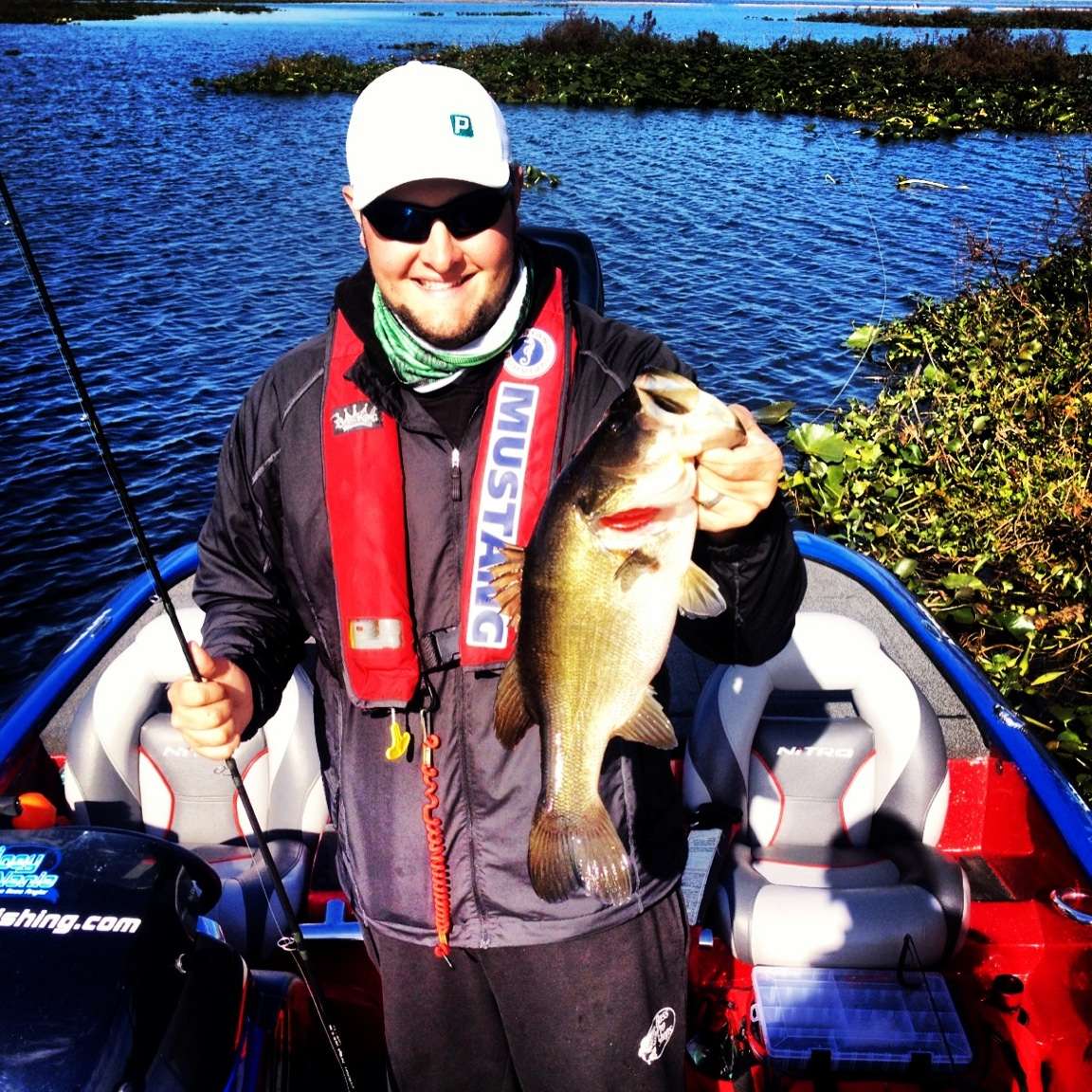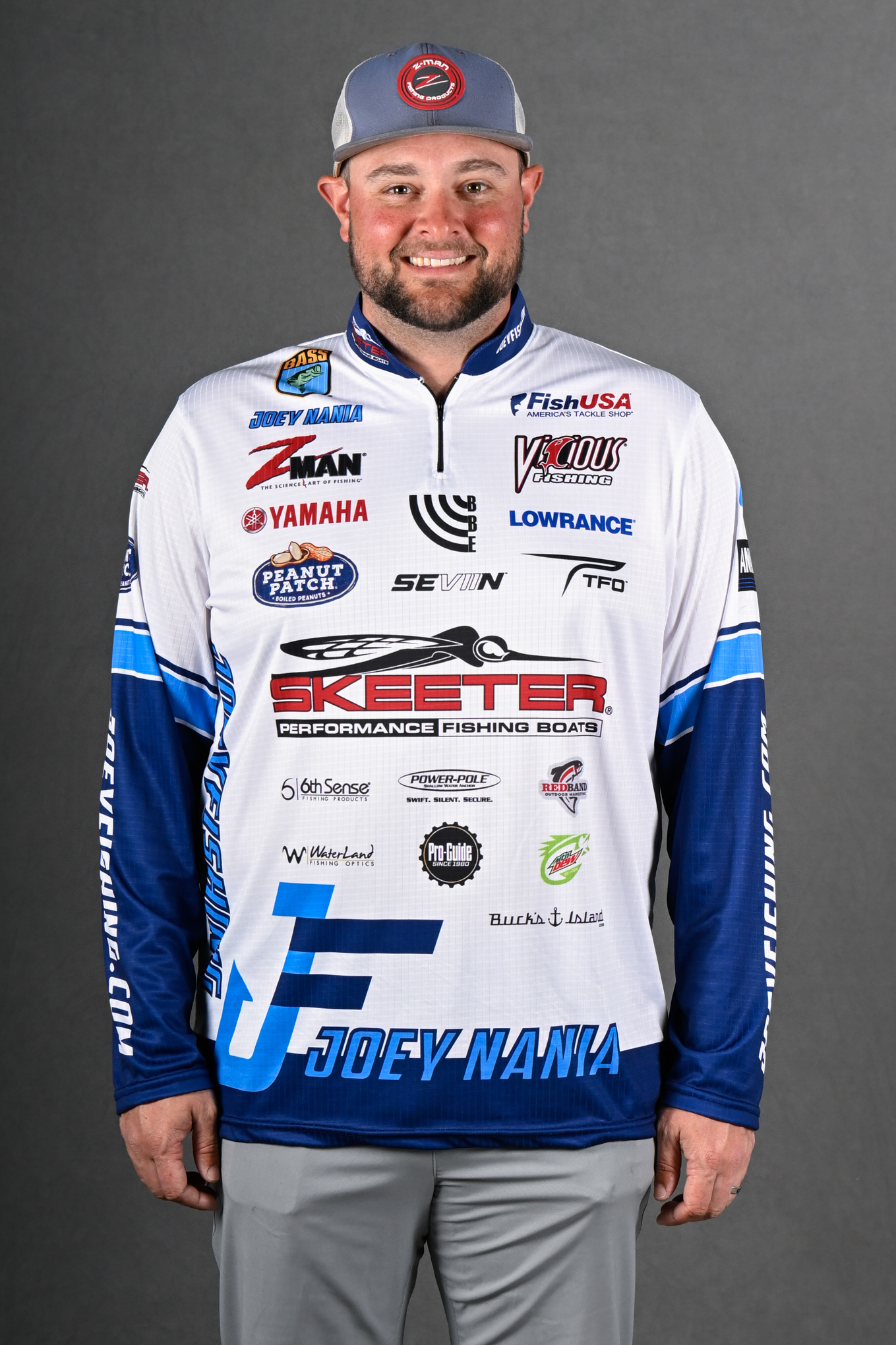
As I sit here and watch the snow fall from my house in Cropwell, Ala., I have a whole new respect for how much severe cold fronts affect southern bass.
Just last week at the Bass Pro Shops Bassmaster Southern Open presented by Allstate on Lake Toho, a series of cold fronts hit the area, throwing a serious curve ball for me and many other anglers competing in the event.
Experienced anglers know that cold fronts, even in Florida, do happen, especially in the often unpredictable month of January. But few of the 200 boaters and 200 co-anglers were prepared for the turn of events that unfolded leading up to and throughout the event.
What I learned from the first stop of the 2014 Bassmaster Opens trail was that locking in on one pattern can end up locking you out of the winner’s circle.
When I arrived in Kissimmee, Fla., for practice, three different patterns were running through my head, each of which seemed to have potential to win the tournament. My first choice — and one of my absolute favorite things to do — was sight fishing. This technique of covering water on the trolling motor searching for big fish locked on beds is a proven winner if the conditions set up for it.
Unfortunately, it quickly became apparent that no such pattern was going to prevail at this season’s event. Just one year ago during the exact same week on the exact same body of water, numerous big bass could be found and caught by sight fishing. The big change was the water temperature difference of almost 10 degrees from the previous year, putting the bass in full prespawn mode, ready to pull up into the shallow spawning areas as soon as the weather stabilized.
Looking ahead in the forecast, it was obvious that no such stabilization was going to occur. So with my excitement for site fishing cleared from my mind, my focus turned to the actual winning pattern from a year ago, punching thick matted vegetation.
Florida fishing is known for being all about the vegetation. Most of the lakes, especially Lake Toho and the Kissimmee Chain, are jam-packed with more types of vegetation than you can count. This can be very overwhelming if you don’t know what you are looking for. Fortunately for me and much of the field, it has been well-documented that prespawn fish plus a snap of cold weather equal an excellent opportunity to flip and pitch heavy tungsten weights through the thickest vegetation you can find.
Understanding that you are searching for thick matted vegetation really narrows down the search on such a large grass-filled body of water. My search began where the tournament was won the previous year on beautiful Lake Kissimmee, after a long run in my Nitro Z-8 powered by my 250HP Mercury engine. Knowing how the tournament was won last year, I immediately started covering miles of the lake looking for areas that held what is often the key vegetation to find — water hyacinth. Hyacinth mats create perfect cover for bass that are looking to absorb some heat near the surface.
 My search quickly led me to an area that was absolutely full of the thick green vegetation, accompanied by dense bog-like land masses, lily pads and relatively deep water. In my mind, this area had all the ingredients necessary to give me a shot at winning the tournament. It didn’t hurt my confidence at all when I made one pass through a short stretch of the area and managed to get three bites, including a beautiful 4-pound Florida largemouth. My mind was basically set that this area is where I would spend the majority of my time throughout the event.
My search quickly led me to an area that was absolutely full of the thick green vegetation, accompanied by dense bog-like land masses, lily pads and relatively deep water. In my mind, this area had all the ingredients necessary to give me a shot at winning the tournament. It didn’t hurt my confidence at all when I made one pass through a short stretch of the area and managed to get three bites, including a beautiful 4-pound Florida largemouth. My mind was basically set that this area is where I would spend the majority of my time throughout the event.
This locking in of my mind is actually what proved to be the downfall of my tournament on the Kissimmee chain.
The sport of fishing is widely different from many other sports out there, where relying on your physical ability and coordination is never enough to win a tournament. It is truly about keeping an open mind and making the right decisions, not two days before the tournament but minute by minute as the day progresses. This locking in of my mind truly hindered the rest of my practice.
I spent the remaining two days finding more similar looking areas where I could punch grass, and only spent a small amount of time attempting to figure out how to catch numbers of fish on lipless crankbaits by fishing offshore hydrilla and milfoil. This was a costly mistake based on the fact that most of the Top 40 where piled up close to the take-off in two well-known areas on Lake Toho slinging reaction baits.
Leading up to the event, the possibility of an offshore bite was definitely on my radar, but with the cold front and my finding of good fish in thick cover, this possibility quickly left my mind. Most people who spend a good amount of time fishing in Florida will tell you that when it gets cold, pick up your flipping stick, keep your head down and flip the heaviest junk you can find.
Little did I know that Florida can actually get too cold for the punching bite to hold up. The water temperature plummeted with back-to-back cold fronts to a relatively frigid 55 degrees by blast-off on the second day. Nothing like this had been seen in the region for the past 7 to 10 years, it was this extreme drop that pushed the fish offshore and caused the majority of them to hide out in deeper 5- to 10-foot staging areas far from any sort of matted vegetation. While a few strong finishes still came from flipping, the true leading pattern was fishing with lipless crankbaits, jerkbaits and the A-rig. If I had it to do over again, I would have never locked in on one specific thing.
Unless the weather is perfectly stable and nothing changes from the practice days to the tournament days, which rarely happens, then you better have a backup plan formulated based on the potential of a complete shift in the weather and the fish’s behavior. If you don’t, there is a good chance that you could be left in the dust.





